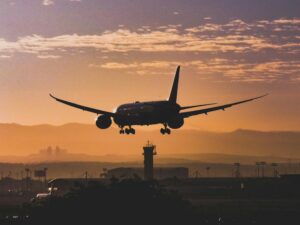Airlines make choices that reveal priorities. Southwest Airlines plans to retrofit over 800 aircraft in just eight months during 2025. Meanwhile, across the Atlantic, many African carriers limit maintenance to safety requirements while regulators fixate on aircraft age. This stark contrast isn’t just about resources. It reflects fundamentally different philosophies about what makes aviation sustainable.
The question isn’t whether African airlines should mimic Southwest’s premium seating strategy. Rather, it’s whether the current regulatory obsession with aircraft chronological age misses the more crucial point about aircraft condition, passenger experience, and operational efficiency.
Southwest’s Ambitious Transformation
When Southwest Airlines announced plans to retrofit its entire fleet by December 31, 2025, industry observers took notice. This isn’t a minor update. The Dallas-based carrier intends to convert between seven and ten aircraft every night across multiple maintenance facilities throughout the United States.
The scale is impressive, but the strategic shift is even more significant. Southwest built its business model on open seating and a single-class cabin. Now they’re installing premium seating and implementing assigned seating procedures. This represents both physical aircraft modifications and a fundamental business model evolution.
What makes this particularly noteworthy is how Southwest approaches fleet management as a continuous improvement process rather than a binary “safe/unsafe” proposition. The airline recognizes that passenger expectations evolve, competitive landscapes shift, and aircraft interiors need refreshing long before airframes reach retirement age.
The African Aviation Context
Contrast Southwest’s approach with the prevailing situation across African carriers. Many African airlines operate with maintenance programs focused primarily on meeting minimum safety requirements. Interior refurbishments, passenger experience improvements, and non-essential upgrades often remain low priorities amid financial constraints and operational challenges.
This reality exists alongside regulatory frameworks that place significant emphasis on aircraft chronological age. Several African nations have implemented age restrictions on imported aircraft, sometimes banning planes older than 10-15 years regardless of their condition, maintenance history, or modernization potential.
The regulatory focus on aircraft age stems from legitimate safety concerns. Older aircraft statistically require more maintenance and may incorporate outdated technologies. However, this approach can create unintended consequences that actually work against both safety and passenger experience goals.
Why Age Isn’t Everything
Aircraft aren’t like milk with an expiration date. A well-maintained 20-year-old aircraft with modern avionics upgrades, regular interior refreshes, and proper structural maintenance can be safer and offer better passenger experience than a neglected 5-year-old plane.
The aviation industry understands this reality. Aircraft undergo rigorous inspection and maintenance schedules based on flight hours, cycles (takeoffs and landings), and calendar time. These programs ensure airworthiness regardless of manufacturing date.
When regulators focus primarily on manufacturing date rather than condition, they create several problems:
First, they artificially limit the pool of affordable aircraft available to African carriers, potentially forcing airlines to stretch financial resources to acquire newer but not necessarily better aircraft.
Second, they may inadvertently encourage minimal investment in existing fleets. If an airline knows it must replace an aircraft in a few years due to age restrictions regardless of condition, the incentive to invest in non-safety upgrades diminishes.
Third, they miss opportunities to improve passenger experience through the types of retrofits Southwest is implementing, which could help African carriers compete more effectively in international markets.
Lessons from Southwest for African Airlines
Southwest’s retrofit initiative offers several valuable lessons for African carriers beyond the specific premium seating product:
First, fleet modernization need not mean fleet replacement. Retrofitting existing aircraft with upgraded interiors, modern avionics, and fuel-efficient modifications can deliver significant operational and passenger experience benefits at a fraction of new aircraft costs.
Second, maintenance facilities can become centers of innovation. Southwest’s ability to retrofit up to ten aircraft nightly demonstrates how maintenance operations can evolve beyond repair into strategic transformation centers. African airlines with maintenance capabilities could develop similar expertise.
Third, passenger experience matters for business sustainability. Southwest’s move to premium seating acknowledges market demands for differentiated products. African carriers competing on international routes face similar passenger expectations that can’t be met through safety-only maintenance approaches.
Fourth, fleet standardization enables efficient retrofitting. Southwest’s relatively homogeneous Boeing 737 fleet makes large-scale modifications more manageable. African carriers might consider greater fleet commonality to enable more cost-effective upgrades and modifications.
Regulatory Recalibration
For African aviation regulators, Southwest’s approach suggests potential policy adjustments:
Rather than focusing primarily on aircraft age, regulators could implement more sophisticated evaluation frameworks that consider total flight cycles, maintenance history, modernization investments, and overall condition. This would encourage airlines to invest in their existing fleets rather than simply meeting minimum requirements.
Regulatory incentives could reward airlines that implement retrofit programs improving safety, fuel efficiency, and passenger experience. These might include expedited approvals, reduced fees, or other operational advantages that recognize the value of fleet modernization beyond basic airworthiness.
Collaborative approaches between regulators and airlines could establish realistic modernization roadmaps that acknowledge financial constraints while progressively raising standards. This partnership model would replace binary age restrictions with continuous improvement pathways.
Regional coordination among African aviation authorities could create larger markets for retrofit services, potentially enabling economies of scale similar to what Southwest achieves through its multiple maintenance facilities. This might make comprehensive fleet modernization more economically viable for carriers across the continent.
Implementation Realities
Of course, significant differences exist between Southwest Airlines and typical African carriers. Southwest operates with financial resources, maintenance infrastructure, and regulatory environments that many African airlines cannot currently match.
However, the principle remains valid: aircraft condition and modernization matter more than manufacturing date. African carriers might implement scaled versions of Southwest’s approach, focusing on targeted retrofits that deliver the greatest operational and passenger benefits within resource constraints.
For example, an airline might implement a rolling interior refresh program that updates a portion of the fleet annually rather than attempting Southwest’s compressed timeline. Or carriers might prioritize specific modifications like fuel-saving winglets or modern avionics that deliver operational savings while improving safety.
The key insight is that maintenance need not be limited to preserving the status quo. Even within resource constraints, maintenance programs can incorporate progressive improvements that extend aircraft useful life while enhancing the passenger experience.
Beyond Binary Thinking
The Southwest retrofit example challenges the binary thinking that often characterizes aircraft age discussions in African aviation. The choice isn’t simply between unsafe older aircraft and unaffordable new ones. A middle path exists through strategic modernization.
African carriers face unique challenges, from infrastructure limitations to market constraints. However, the fundamental approach of continuous improvement rather than age-based replacement offers a more sustainable path forward for many airlines on the continent.
For regulators, this suggests a shift from simplistic age restrictions toward more sophisticated frameworks that evaluate actual aircraft condition, modification history, and operator maintenance capabilities. Such approaches would better serve safety goals while enabling more efficient use of limited aviation resources.
Southwest’s ambitious retrofit program demonstrates that even established carriers with successful business models must evolve. For African aviation, the lesson isn’t about premium seating specifically, but rather about approaching fleet management as a continuous improvement process rather than a binary safety compliance exercise.
The future of African aviation depends not on the average age of aircraft but on the industry’s ability to maintain, modernize, and optimize whatever aircraft it operates. That’s a lesson worth learning from Southwest’s example, regardless of how many premium seats they install.
Disclaimer: The insights shared in this article are for information purposes only and do not constitute strategic advice. Aviation markets and circumstances vary, and decisions should be based on your organisation’s specific context. For tailored consultancy and guidance, please contact info@avaerocapital.com.




